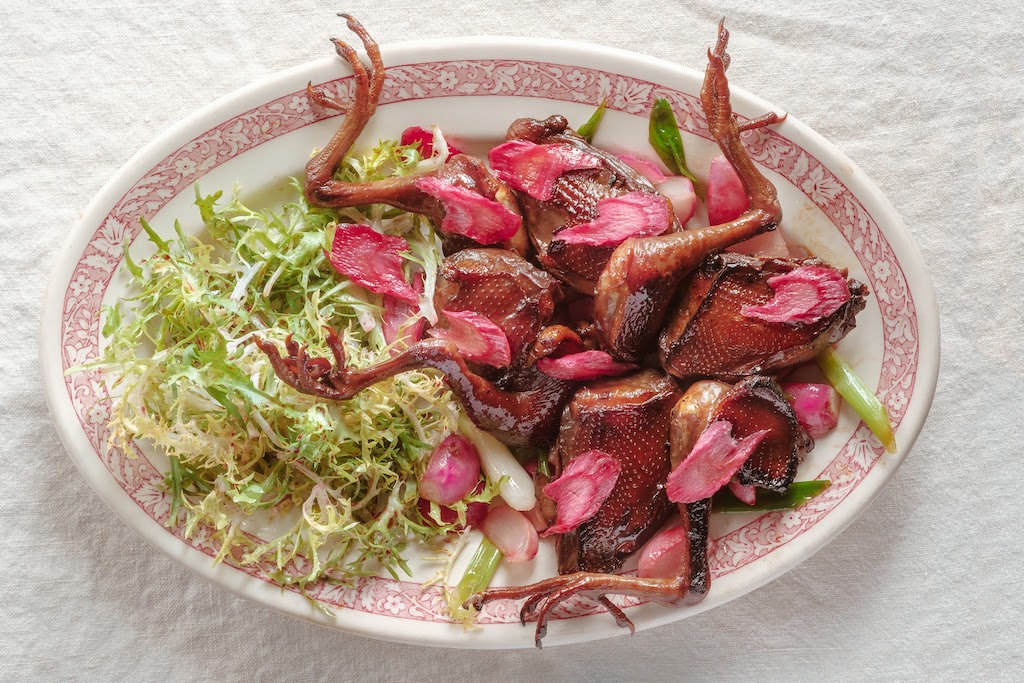Stalking Spring
The shroud of darkness is lifting. The sun is higher in the sky and tulips are budding. Birds are so loud that it would be annoying if it wasn’t so comforting. There is a warm breeze coming from the west.
Yes, it seems like spring.
Then it all comes to a screeching halt. You’re in Wisconsin, and the first day of spring can be either a poetic soliloquy or a late-season ice storm.
However spring begins, this is a time for renewal. In the food business, this is the season that every cold-weather chef looks forward to. After months of raiding hoop houses and root cellars for whatever limited, local product is available, we’re ready to change the menu.
At times, it is hard for the average consumer to differentiate the seasons as they walk through supermarkets with produce from who-knows-where piled a mile high. But there was a time when you only saw asparagus in spring, corn and tomatoes in the summer. Fall was Brussels sprouts, cauliflower and perfect, crisp apples. Around here, we’re knee deep in local peas, sorrel, radishes, fava beans and asparagus that are at or are approaching their sweetest and most flavorful peak.
Of all the items that put a spring in my step, the numero uno, the big Kahuna, the one with the pedigree, has to be rhubarb. There is no seasonal confusion here, as this fruit-like vegetable truly captures the aura of spring. It’s bright, beautiful, and elegant with a tart flavor that dares you to be complacent.
The first time I remember having it was as a child when my grandmother was visiting us for the day. She was looking out our kitchen window that overlooked the backyard. “Yes, it’s ready—and if I wasn’t here it would rot.”
I didn’t have a clue as to what she was looking at —the yard was big and divided into two sections. The inner yard had a large sycamore tree that half-shaded the about 10x20-foot carpet of green grass. Then there was the outer region, a dark overgrown thicket with a white fence around it that was put up years before to contain a pet dog that outgrew the space.
Through all this brush and bramble my grandmother, with her “falcon vision,” had locked on to her prey: The rhubarb. She picked up a large kitchen knife and we went outside. As we walked through the front gate, she told me to keep up while she quickly hacked a small path. I started to see the bright red stalks with large wavy leaves. She lopped them off from the bottom with one swift swipe and commanded, “Gather it up!”
We returned to the kitchen with out treasure and she made various coffee cakes, kuchens and pies. My favorite treat was simmered chunks of rhubarb mixed with so little sugar that it was on the edge of savory. It was an instant preserve that filled the room with its enticing aroma. I had to stay out of her eyeline and quietly sneak around the table to snatch warm, sticky chunks out of the bowl as they were cooling.
That taste memory, created by my grandmother, became the base of all the savory rhubarb preparations that I have made over the years. Like fine wine that has an imperceptible amount of natural sugar to put it into perfect balance, my freshly juiced rhubarb gets a small amount of sugar added to the reduction to make it a proper suitor for my favorite game bird: Squab.
In the spring — along with the rhubarb — local farms are flush with tiny bright radishes, zesty green onions and the most miniscule tart greens peeking through the topsoil. They make a formidable ensemble to accentuate the caramelized bird. With its succulent flesh and a triple dose of rhubarb, (in the marinade, vinaigrette, and garnish) this dish is a seasonal tour de force. So keep your eye out for rhubarb—I spotted mine right out our back window. After the first bite, no matter what the weather maybe, you’ll know it’s spring!





